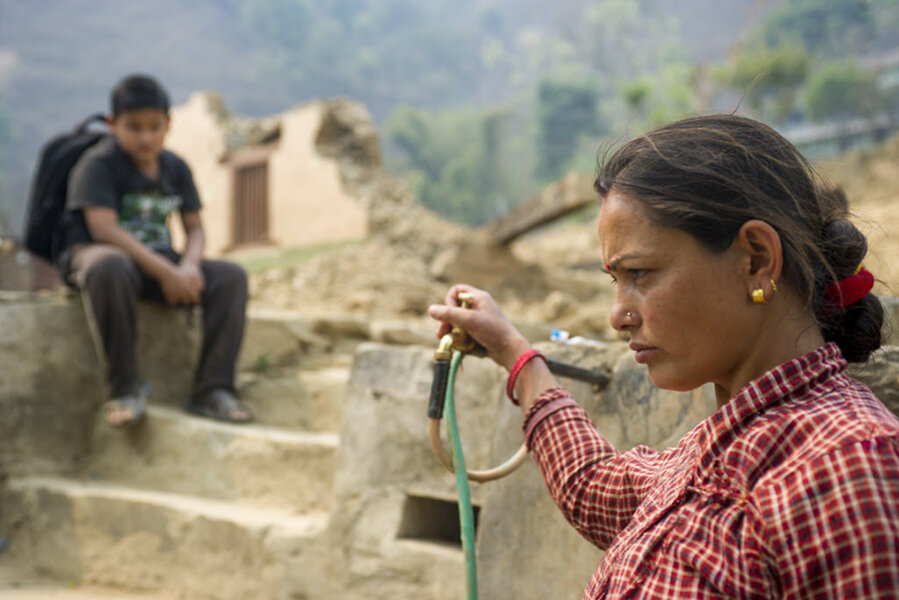More than a year after Nepal quake, government agrees to speed up aid
Loading...
Nearly a year after saying it would pledge money to help families rebuild their homes after a devastating earthquake, the Nepalese government has finalized its rules for the aid.
Facing mounting criticism as millions of families were left homeless, Prime Minister Khadga Prasad Oli said that payments of 200,000 rupees, or about $1,900, would be paid out in two installments instead of the expected three in order to speed up recovery, the Associated Press reports.
The first installment would cover 75 percent of the total, an effort aimed at jumpstarting the efforts to help the 2 million families left homeless following the earthquake and its powerful aftershocks on April 25, 2015, which killed almost 9,000 people.
Many rights advocates had harshly criticized the government's response as citizens continued to live in tents or corrugated metal shacks intended as temporary quarters.
By spring 2016, the government had signed agreements with foreign donors for nearly half of the $4.1 billion pledged by foreign donors to help rebuilding efforts; the total cost of the quake will likely be almost $8 billion. Yet a year after the disaster, Nepal had yet to rebuild a single permanent home or school, as The Christian Science Monitor reported in April.
"We always thought the government's response would be slow," Nayan Pokhrel, a researcher at the Kathmandu-based Democracy Resource Center, told the Monitor in April. "But we didn't think it would be as sluggish and as hopeless as this."
With the government finally overcoming political challenges to begin providing assistance, residents are applauding that initial hurdle. For some rights advocates, there is also a larger hope – could Nepal rebuild without relying on child labor?
A nonprofit called Better Brick Nepal has focused particularly on the country's brick industry, providing technical assistance to 23 kilns in order to improve their efficiency and quality, in return for a promise – the kilns must ban child labor.
The pilot effort also requires kilns to bar bonded or forced labor and adopt environment and workplace reforms, the Monitor's Michael Holtz reports.
The program's founder, Homraj Acharya, is particularly hoping the billions in international aid will come with a promise that the rebuilding efforts won't involve bricks manufactured at kilns that employ child laborers.
"If you give money, you have the right to also demand responsibly produced materials," Mr. Acharya told the Monitor. "This is an opportunity to create a market in Nepal where people will be demanding child labor-free bricks."
Although child labor is declining globally, efforts to convince Nepalese employers to bar it often involve going kiln to kiln, the Monitor reports.
As those efforts continue, some residents say they are glad to see the government overcome political challenges and last winter's fuel blockade along the Indian border to begin finally providing aid.
Previously, only 13,616 families had received partial aid money to rebuild their homes since the earthquake, the AP reports.
"It has been more than a year," Krishna Tamang, a retired farmer whose home in the village of Sakhu, east of Kathmandu, was destroyed by the quake, told the AP.
"The monsoon rain is already here, and we are living in tin sheds. We are glad the government made the decision to give more money in the first installment."







